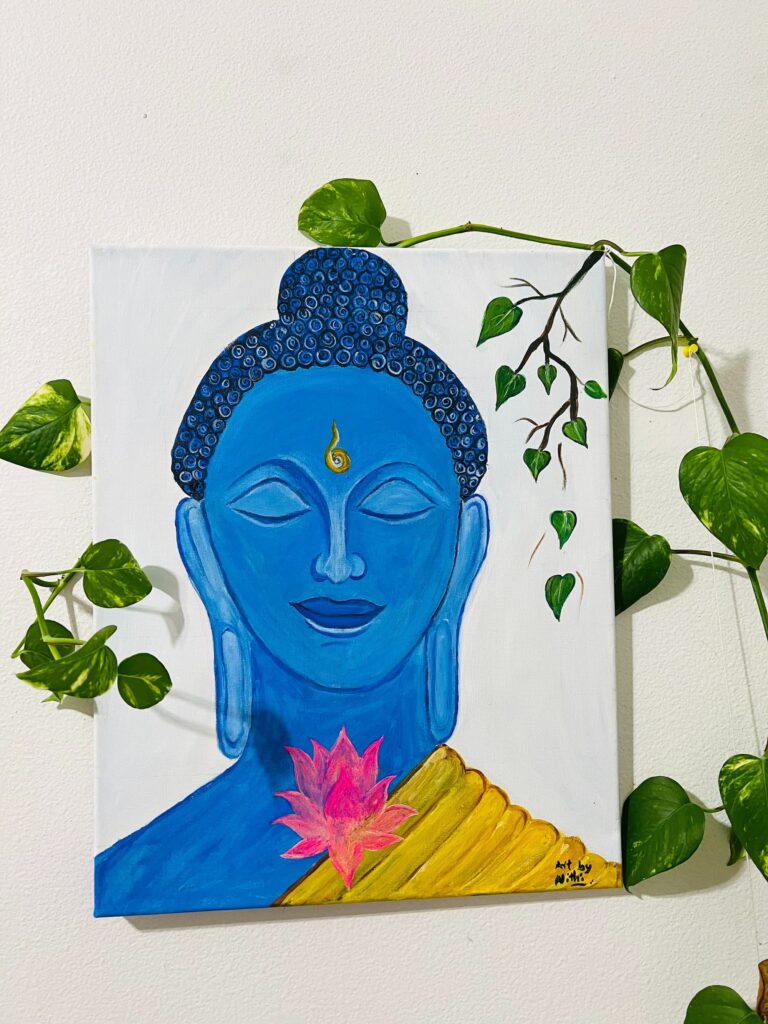Learning to draw, just like learning a foreign language or playing the guitar , takes time, willpower and a lot of perseverance, but with practice every day you will definitely succeed. Professional teachers of painting and drawing recommend starting with the basics.
positive attitude
Drawing (especially from scratch) does not involve harsh self-criticism, only practice and comparison of new work with the old one. If the idea doesn’t work out the first time, that’s okay, keep trying again and again, over and over again, honing each brush stroke.
Do not choose too complicated oil painting techniques to start with – learn how to draw with a pencil first. Try to master academic drawing, or fashion dudling (unconscious drawing of doodles and simple objects in the same subject). When you have mastered the basic techniques, you can move on to more non-standard techniques.
If you are close to the doodling technique, you can start with ready-made anti-stress coloring pages and slowly get the hang of drawing in this style on your own.

Practicing the Basics of Perspective
If you want to learn how to draw from scratch, start with simple geometric shapes. For example, from a circle – if you master it, you can draw anything. Try to reduce the number of movements, increasing the quality of the drawing. In the future, this will help to sketch smoothly and quickly.
Repeat the procedure until you feel that you are doing it without straining, relax the brush. Having coped with the circle, go one step higher: square, cube, cylinder. The next step is to draw the figures from different angles.
Battery, ruler, flower or cactus – mentally circle their outlines. See the object? Fix the image in your mind and try to rotate it, outline it.
Learn proportions and anatomy
In order to learn how to draw not only beautifully, but also correctly, one cannot do without theory. You need to know the proportions of objects so that the pictures look harmonious. To do this, just drive the query “Proportions for drawing” into the search engine and select the appropriate template. So, the body of an adult is easy to measure in proportions: torso – two heads, legs – four. Do not try to remember everything at once, save your favorite schemes in a separate folder so that they are always at hand.
Draw sketches
Sketch is a quick drawing (sketch) technique that is easy to learn and does not require any special skills. If you have an idea, such a sketch is ideal for remembering and visually expressing the idea.
Stock up on blank notebooks and … draw sketches, anywhere and anything: food, buildings, interior items, people. Build complexity: from contour drawing to detailed display. At the same time, it is important to imagine what elements the object consists of and draw each one separately. For example, a person – learn to draw fingers first, then arms, legs, and so on.
Learning to convey light and shadow
Have you managed to draw almost every object in the room without much effort? Now it remains to give them volume. The distribution of light and shadow relative to objects in space helps to convey the volume and position of the object, make the drawing realistic and even change the mood of the picture as a whole.
You need to observe how the position and length of the shadow changes in different conditions – indoors and outdoors.
- The light from the light bulb in your room always falls the same, and the shadow from the sun changes depending on the weather and time of day. The sunnier the day – the greater the contrast of chiaroscuro, if it is cloudy – then the midtones become softer. By the way, a small life hack to more clearly catch the boundaries of light and shade on the street, put on sunglasses .
- Under warm lighting (sun, light bulbs), light objects acquire a yellowish color, with blue (LED lamps) – cold.
- Depending on the number of lighting points, you need to calculate light and shadow on objects. First, learn how to do it with one point.
Understanding color theory
The next stage is to learn how to create shades and combine colors, work with tone and saturation to set the mood for the whole picture or individual characters. To do this, use the Itten color wheel, with which the life of a novice artist becomes much easier.